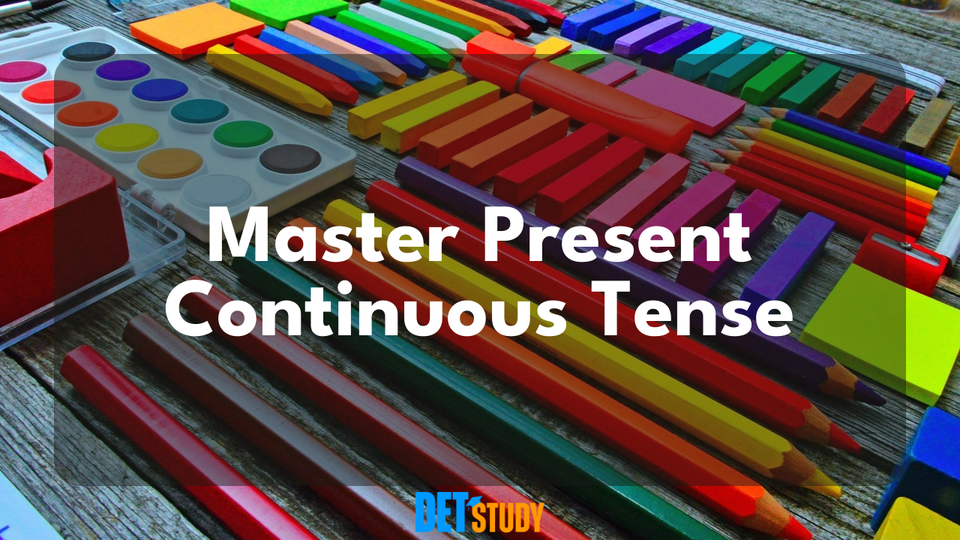Unlock Confident Communication: Your Guide to Present Continuous Questions

Here's the summarized and simplified text, with all HTML tags and structures preserved:
Present Continuous Questions: Structure & Examples
The present continuous tense describes actions happening now or planned for the near future. It uses the verb "to be" with the main verb's -ing form. For questions, this structure changes slightly. 🤔
How to Boost Your Duolingo English Test Score by 10 PointsForming Present Continuous Questions
To ask a question in the present continuous tense, follow this structure:
- Start with the appropriate form of "to be" (am/is/are).
- Follow with the subject.
- End with the main verb's -ing form (present participle).
Basic structure: - Am/Is/Are + Subject + Verb(-ing) + ?
Examples in Use
- "Are you watching TV?"
- "Is she reading a book?"
- "Am I doing this correctly?"
- "Are they playing football?"
- "Is it raining outside?"
This question form is frequently used to ask about current activities. For future plans, like "What are you doing this weekend?", the present continuous is also common. By understanding these structures, you can effectively ask and answer questions about ongoing actions and future arrangements. 🗣️
Start DET PracticeCommon Uses of Present Continuous Questions
Present continuous questions are used to ask about current actions, temporary situations, and future arrangements. These questions help confirm or understand ongoing activities. ✨
Asking About Ongoing Actions
Use these questions for actions happening right now:
- "What are you doing?"
- "Why is she crying?"
- "Are they studying for the exam?"
Inquiring About Temporary Situations
These address non-permanent situations around the present time:
- "Is he staying with his parents these days?"
- "Are you feeling better?"

Discussing Future Plans or Arrangements
For pre-arranged future plans:
- "Are we meeting Sarah tomorrow?"
- "Is she joining us for dinner tonight?"
Exploring Changes and Trends
To inquire about ongoing developments:
- "Is the company hiring more staff this year?"
- "Are more people switching to electric cars?"
Understanding these uses improves conversational skills for present and planned future activities. 🗣️
Tips for Effective Practice
Improve your ability to form and use present continuous questions with these strategies: 🎯
1. Understand the Structure
Remember: (Question word) + am/is/are + subject + verb-ing?
- "What are you eating?"
2. Incorporate Question Words
Use what, where, when, why, who, and how for specific details.
- "Where are you going?"
3. Practice with Everyday Scenarios
Create questions in common situations.
- In a park: "Are they playing soccer?"
4. Engage in Role-Playing
Practice conversations with others to enhance fluency.
- Person A: "Are you listening to the new podcast episode?"
5. Use Online Resources
Explore apps and websites for interactive exercises. 💻
Practice English Now6. Observe and Ask
Mentally question actions around you.
- "Is John working on the project right now?"
7. Record Yourself
Listen to your practice to identify areas for improvement. 🎤
8. Combine with Other Tenses
Contrast with other tenses for advanced practice.
- Present Simple: "Do you like coffee?"
- Present Continuous: "Are you drinking coffee right now?"
Common Mistakes to Avoid
Be aware of these common errors when forming present continuous questions to ensure clear communication: 🚧
- Incorrect Word Order: The auxiliary verb (am/is/are) must come before the subject.
- Correct: "Are you watching the movie?"
- Forgetting the Auxiliary Verb: Always include "am," "is," or "are."
- Correct: "Why are you playing the guitar?"
- Mixing Tenses: Use the -ing form for actions happening now.
- Correct: "Is he working on the project?"
- Using the Wrong Form of the Main Verb: The main verb must be in the -ing form.
- Correct: "What is she writing?"
- Misplacing the Subject: Ensure the subject is between the auxiliary and the main verb.
- Correct: "Is she eating dinner now?"
- Neglecting Question Words: Include "what, why, who," etc., when seeking specific information.
- Correct: "Why are they visiting?"
Avoiding these mistakes will help you form accurate and clear present continuous questions. ✅
DET Study provides an extensive suite of over 15,000 practice questions, focusing on leveraging adjectives and adverbs to fortify your grammatical skills. Regular practice with these targeted materials ensures that you approach the Duolingo English Test with enhanced confidence and precision, ready to achieve your desired scores.
🎯 Need more practice? Check out DETStudy.com for expert resources, 15,000+ practice questions, and AI-powered writing and speaking feedback.

